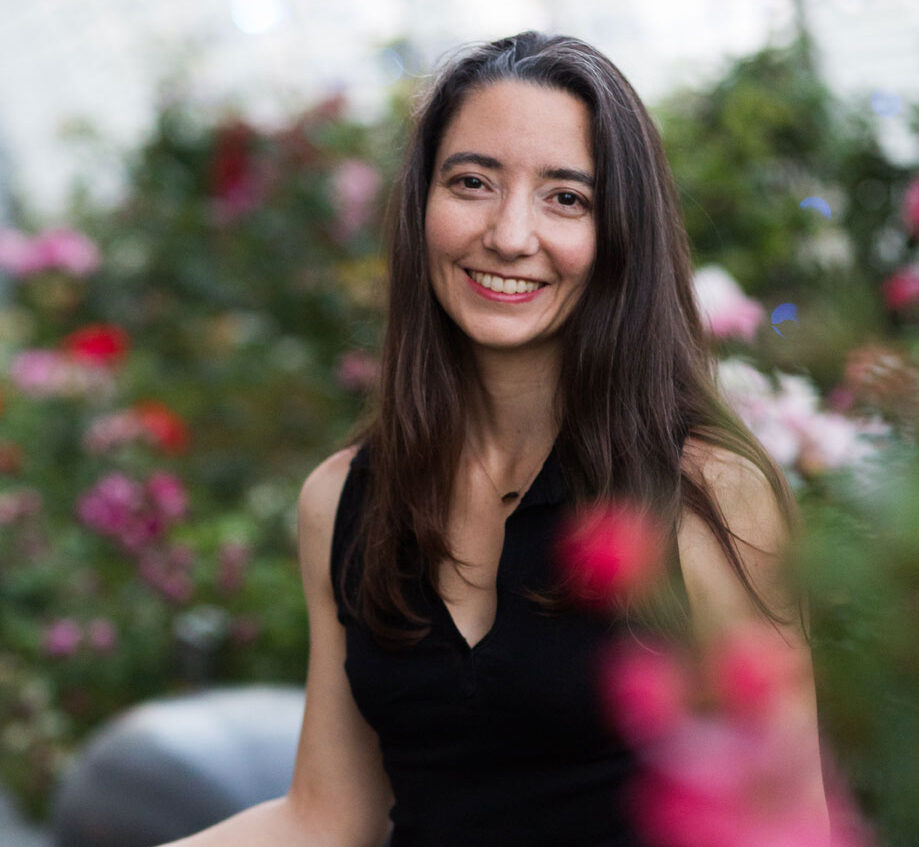In dieser kleinen informellen Umfrage werden die verschiedenen individuellen Perspektiven des „Milonga-Raums“ beleuchtet. Da nicht alle der Befragten Deutsch sprechen werden die Fragen auf englisch gestellt.
#05 SHARNA FABIANO (Los Angeles)
1. Why do you go to a Milonga?
To enjoy the company of friends (and sometimes strangers!) through a connected and creative experience of dancing tango together, and also to chat and to watch others dance.
2. In short, what are the three most important factors for a good Milonga?
– a physical environment designed to feel both relaxing and magical – this can be the physical structure itself, the way the furniture, lighting and other temporary features are arranged, or some combination of the two.
– intentional and skillful musical selection
– the collective focus of those attending is leaning toward generous and open to connecting with others.
3. How do you define „good Milonga“?
Nowadays, afternoon milongas are my favorites! Beyond that, a good milonga is one in which the above three conditions synchronize to open a liminal space apart from everyday life. This allows me the opportunity to shed stress and worry and return to a more authentic state of being in a community setting. There are so few places where that is possible in our world and I think it’s one of the greatest gifts of social dance. It’s not the same to relax at home by yourself or with your family. That can also be healing IF your home is a nourishing place, but it doesn’t offer the same “refresh” of your system that the community setting does.
4. In short, what are the three things that you do not want to experience at a Milonga?
– Physical or psychological harassment, abuse, or manipulation
– Negative criticism of self or others
– Excessive heat – I don’t like sweaty social dancing, just a picky personal preference
5. How do you choose who you dance with at a Milonga?
I dance so little nowadays that it is almost always a pre-arranged outing with a group of friends, and I dance mostly with those people. If an old tango friend or colleague I haven’t seen in many years appears unexpectedly, that’s a special thrill for me and I would prioritize dancing with that person. Beyond those cases, I look for partners who 1. have a minimum threshold of skill level such that I’m certain we will both be physically comfortable and 2. seem to have interest in me at the same time I have interest in them. If a stranger invites me and I feel a clear internal YES or internal NO, I try to follow that intuition either way.
6. What are your thoughts on open role dancing at a Milonga?
Yes, of course open role dancing. Dancing roles, like other roles, are not biologically determined – they’re socially determined. If we believe in social equality in life and work then I don’t see why we would not encourage social equality on the dance floor. I was incredibly lucky in that I learned both roles from the very beginning, and I’d like everyone to feel free to choose or change their role as they wish. I don’t like switching roles in the middle of a song, though. I like to dance the whole song in one role. That’s just my personal preference.
7. Do you have a most beautiful memory of a Milonga?
Instead of a memory I’ll share a vision: After many years of tango retirement, I’ve started teaching again and have found an incredible venue to partner with in my city. I imagine a new tango community evolving organically, and ultimately hosting a beautiful milonga there.
8. How do you see your role at a Milonga?
I’ve played every formal role imaginable at a milonga, but right now I’m enjoying being anonymous, just a dancer. That said, I do feel I have a role to play in bringing a positive mindset and a positive somatic state of being into the space. I think everyone has that role and it’s easy to forget that you influence the environment even if you’re not an organizer or a teacher. In the words of Priya Parker, “guesting” is just as important as “hosting.”
*) Who are you and what drives you?
I’m fascinated with improvisation in all art forms and in all relationships, and I believe lead and follow dynamics are at the heart of everything humans do, feel, and are. I am a tango artist and movement specialist with 25 years of teaching experience and a Master’s degree in Dance. I’m also a mindfulness-based coach, a painter, and a writer. I love trees, throw great dinner parties, and read fantasy novels.
